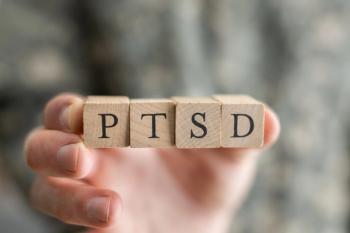
PTSD Is Treatable, But There's No Holy Grail: Insights From Arash Javanbakht, MD
There is no magical cure for PTSD... but in what areas can we improve treatment outcomes and real-world functioning for patients with PTSD?
"Posttraumatic stress disorder (PTSD) is a condition that is luckily treatable. There are things we can do, but we don't have a holy grail yet," Arash Javanbakht, MD, told Psychiatric Times.
Up until 25 years ago, there were no medications that were US Food and Drug Administration (FDA) approved, and there is still a need for treatments that yield better outcomes for these patients.1 After 20 years, there are still only 2 approved medications to treat PTSD, and these are flawed. Additionally, patients on medications and in therapy often still experience residual symptoms. This, said Javanbakht, is a huge problem--one he hopes to address.
Therapies are mostly based on cognitive models and psychedelics2 are "not there yet," shared Javanbakht. Exposure therapy can help patients with PTSD deal with their fear; however, exposure therapy in the clinical setting is not practical. If a patient has trauma related to spiders, exposure therapy might help them face their fear... but most psychiatrist do not have a bucket of spiders on hand. This principle can be applied to a plethora of other traumas.
"Patients know regular people at the grocery store are not a threat, but their brain has associated certain types of people or certain contexts with trauma and danger," said Javanbakht. "However, we don't have a grocery store at the clinic."
This is where Javanbakht suggests there is a lag in treatment potential: real-world function. Many psychosocial challenges come from an inability to socialize, go to the grocery store, or go to work, and it is in these areas that PTSD treatment must be improved. Not being socially connected leads to complications like suicide,3 substance abuse, and more.
You can read more about Javanbakht's use of augmented reality for the treatment of anxiety and trauma-related disorders here:
Dr Javanbakht is the director of the Stress, Trauma, and Anxiety Research Clinic in the Department of Psychiatry and Behavioral Neurosciences at Wayne State University School of Medicine.
References
1. Kuntz L. 5 key take-aways about PTSD treatment: a closer look at MDMA. Psychiatric Times. August 9, 2024.
2. Duerr HA. With MDMA on hold, what’s next for psychedelics? Psychiatric Times. September 11, 2024.
3. Fox V, Dalman C, Dal H, et al.
4. Javanbakht A, Hinchey L, Gorski K, et al.
Newsletter
Receive trusted psychiatric news, expert analysis, and clinical insights — subscribe today to support your practice and your patients.

















